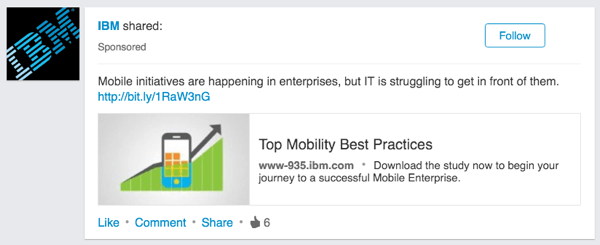 Are you fully leveraging the power of your social team?
Are you fully leveraging the power of your social team?
Have you considered using social for more than just marketing?
Your social team can do more than manage your online community. Your team can also support the goals and functions of other departments in your business.
In this article you'll discover four ways your social media team can contribute to the success of your business.

Listen to this article:
Where to subscribe: Apple Podcasts | Spotify | YouTube Music | YouTube | Amazon Music | RSS
#1: Inform Planning Decisions
Whether your business is working on annual or seasonal campaigns across traditional or digital channels, your social team can offer useful data and information on:
- Positioning and the opportunity to meet gaps in the marketplace
- Data and information that can fuel new ideas or positioning
Ask for a briefing well in advance, so you can give your team time to get a firm grasp on the information that will be beneficial at the planning meeting.

For example, if your business is planning a holiday campaign, have members of your team use social monitoring tools to conduct research that sheds light on successes and challenges with past holiday campaigns, the competitive landscape, and overall sentiment for a specific category or campaign.
Or if a new brand position is being discussed, your community manager can reach out to key influencers who are active and loyal to test their perception of and receptiveness to proposed approaches. Additionally, your team can design a social media survey and target a larger pool of relevant audiences to test whether new ideas and messaging are on track and positively perceived.
#2: Support New Initiatives
When integrated with other distribution methods such as programmatic media and search engine marketing, social media can drive awareness for new initiatives, such as a product launch.

Your social team can create visibility for the launch through paid social media ads to hyper-target potential customers, as well as through partnerships with influencers and brand advocates.
To make working with brand advocates easier, you can use tools such as Crowdly to identify individuals who have previously engaged with your content beyond a “like,” so you can leverage them to reach additional audiences.
Regardless of which methods you combine, remember to align your messaging and timing to drive impact.
#3: Extend the Life of Key Content Assets
Brands spend tremendous resources building content, and often don't prioritize distribution. Your social team is ideally placed to ensure this content is seen and shared by the right people at the right time.

Make it a priority to break long-form content or creative into short-form content snippets and shareable photos that will stay in circulation long after the initial publication release.
Get World-Class Marketing Training — All Year Long!
Are you facing doubt, uncertainty, or overwhelm? The Social Media Marketing Society can help.
Each month, you’ll receive training from trusted marketing experts, covering everything from AI to organic social marketing. When you join, you’ll also get immediate access to:
- A library of 100+ marketing trainings
- A community of like-minded marketers
- Monthly online community meetups
- Relevant news and trends updates

Discover Proven Marketing Strategies and Tips
Want to go even deeper with your marketing? Check out the Social Media Marketing Podcast! Publishing weekly since 2012, the Social Media Marketing Podcast helps you navigate the constantly changing marketing jungle, with expert interviews from marketing pros.
But don’t let the name fool you. This show is about a lot more than just social media marketing. With over 600 episodes and millions of downloads each year, this show has been a trusted source for marketers for well over a decade.
#4: Develop Thought Leadership Positioning
Many brands have an opportunity to leverage social to build thought leadership, by way of brand-owned channels or through key internal leaders who can serve as industry and brand advocates.
Authenticity can be tricky though. It starts by taking a non-branded approach where content is positioned around challenges and solutions, instead of around promotion.
Social media team leaders can oversee thought leadership training and governance internally to ensure that when executives develop a social presence, it is properly managed and set up for long-term success. Collaborating with the communications team is instrumental to ensure there is a clear delineation of roles and responsibilities.
Share the Strategic View
Brands continue to look for the best ways to connect with their customers across all digital channels, meeting them where they already live online. With an overwhelming number of platforms and marketing vehicles to choose from, the challenge remains: How do brands tell cohesive stories across digital channels that create a seamless experience for the consumer, while maximizing each channel's potential?

An effective social presence is key when connecting with customers online. As such, there are elements of a brand strategy that must manifest in social, such as the brand platform, creative vision, and overall content strategy to accurately reflect voice and tone. The social media team should be intimately familiar with these brand intricacies to ensure alignment with overall messaging and tone when communicating with customers and engaging with them through campaigns.

To enable such an approach, social media leaders should lay the foundation for a successful presence, beginning with how team members are trained, to education across the business, demonstrating how social can support the business, and even validating go-to market positioning.
When a new person joins your social media team, it's crucial to provide context on your business's overarching brand strategy, what your business stands for, and its overall mission. For new social team members, you'll want to include additional layers of insight that ensure the success of your team. Take time to review your social strategy and share exactly how social media is used to support the business overall.
Be sure to cover:
- Functions of each channel in relation to business goals
- Content strategy
- Nuances of language when engaging with customers, including regional differentiators and ways of interacting with local markets
- Influencer infrastructure
- Engagement practices
- The tools you use every day
- Measurement and KPI structure
Create an open knowledge base for these resources and you make it easier to create efficiencies and explain the approval process for staying on brand.
Setting this foundation early helps new team members successfully stay on brand as they take on social media marketing tasks.
Conclusion
While social media is one component of the digital marketing ecosystem, insights that can be generated from consumer chatter are immense and can significantly impact business and brand decisions.
By being proactive and bringing this knowledge to the broader marketing team, social media team members can be positioned as instrumental, valuable assets to the brand at large.
What do you think? Does your social team take part in any of these activities? Please share your thoughts in the comments below.
Analysis photo from Shutterstock.

Attention Agency Owners, Brand Marketers, and Consultants

Introducing the Marketing Agency Show–our newest podcast designed to explore the struggles of agency marketers.
Join show host and agency owner, Brooke Sellas, as she interviews agency marketers and digs deep into their biggest challenges. Explore topics like navigating rough economic times, leveraging AI, service diversification, client acquisition, and much more.
Just pull up your favorite podcast app, search for Marketing Agency Show and start listening. Or click the button below for more information.

